Poncho Shelter

The Poncho and Gum Blanket by Sergio Lamboy
Over the years, I've done my best to simplify my kit when it comes to short jaunts in the woods. Be it a single overnight, or just a day scouting new terrain, keeping it simple tends to pay off. Now I know it's hard to believe, but a gear junkie like myself knows when to say when, and it's funny how good gear seems to make a comeback every now and again. I guess the classics just had it right from the beginning. As the title of this entry in the journal states, I'm talking about the Oil Cloth Poncho and the Gum Blanket, both offered on the Coalcracker site. These two pieces of kit have been my go-to for a while now. The simplicity and versatility of these items combined are immeasurable.
The gum blanket's ability as a moisture barrier, either when being used between you and a debris bed you just made, or to cover the pack and firewood you just hauled in for the night, will protect you and your gear from the weather. This piece of old woodsman tech has been used since the Civil War and is still the go-to for many outdoors people since.
Dan has had these on the site for years and I finally came around to getting one for myself. I can say this...I have not regretted having my gum blanket every time I've used it since. It doesn't crinkle or make noises that will wake you in the middle of the night, unlike poly tarps or those self-proclaimed survival blankets. The dimensions laid out and open have been perfect for nearly every tarp shelter configuration I've set up over the years.
Speaking of tarp shelters, I've winnowed my way down from a 10'x10' oilskin tarp to just the Coalcracker Poncho as of late. Now don't get me wrong, each and every one of my shelter kits have a purpose, and over the years I've justified going larger on my shelter choices when traveling solo or with friends. I always consider the what ifs, whatever they may be, and I have suffered way too many times for no reason other than to be stubborn.
That being said, when the Oil Cloth Poncho was introduced, I was intrigued. I'm a huge fan of ponchos in general and I have more than I'd care to admit - everything from Sil-Ny, to the issued USGI poncho, to a few dollar store ponchos in the glove box of my car. They've been a staple in my rotation of equipment for quite a while. Early on in my outdoor career, I was a fan of two-piece rain gear sets, which do have their place, but there is something about a poncho that just feels right when tromping through the woods. The ease of deploying a poncho when the weather comes in is second to none. The breathability will outperform the newest high-tech rain gear. Lastly, it looks cool! All kidding aside, when you combine these two items, you will get a system that will do all that I stated earlier, as well as a shelter to keep you comfortable through the night and against all but the harshest downpour.
You can see by the photos, it's not an extremely large shelter system. I'm just shy of 6 feet tall, and if set up and used properly, you can be comfortable as well. It serves its purpose as a multi-function kit, saving pounds on my back and making those quick trips into the bush easier. The shelter configurations shown in the images provided are just a few examples. There are tons of videos online showing others. So, if you're looking to lighten the load, but keep that traditional feel when getting out and into the woods, either for the day or a simple solo overnight, consider the Poncho and Gum Blanket.
1. Raised Delta Shelter: Our poncho is being supported by two crossed saplings that are just a little too long corner to corner. This creates a dome raised in the front by two Y-branches, allowing for more head room to sit up in this configuration. If the weather and wind get bad, just drop the front of the shelter to fully enclose yourself under the shallow dome.


2. Lean-To Shelter set up utilizing the hood of the poncho tied off to a bi-pod to allow for more space to sit up.



3. Plow Point Shelter utilizing a ridge line and bi-pod to offer even a big guy like me enough room to get out from the storm.


